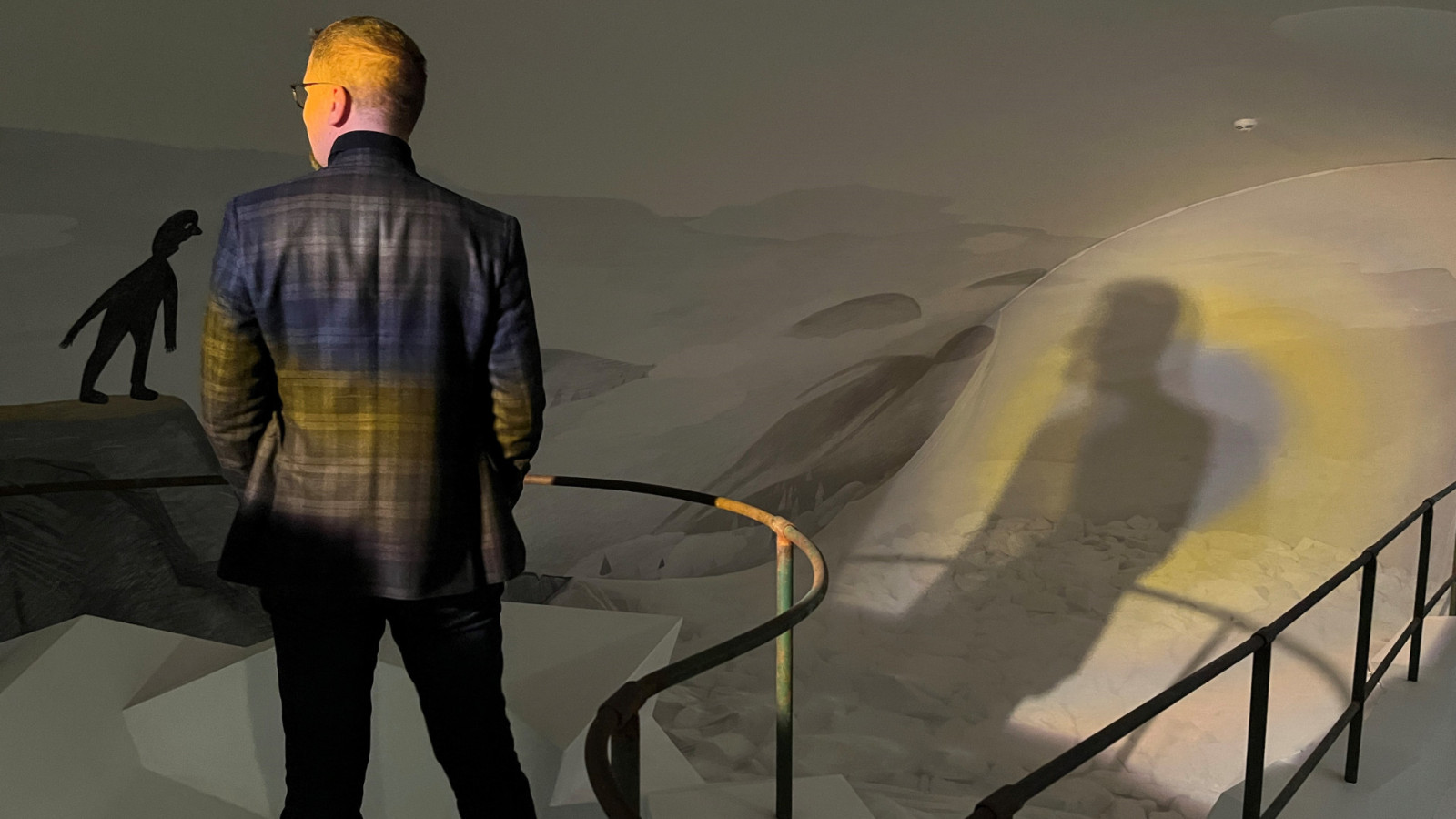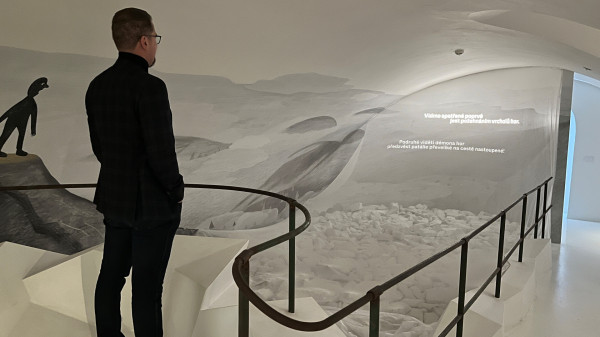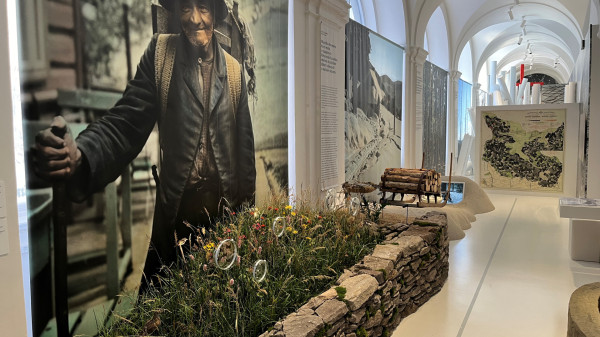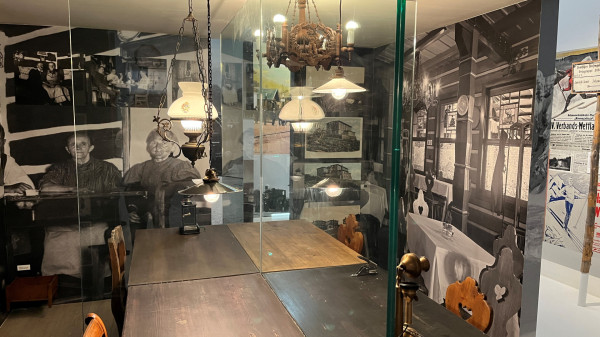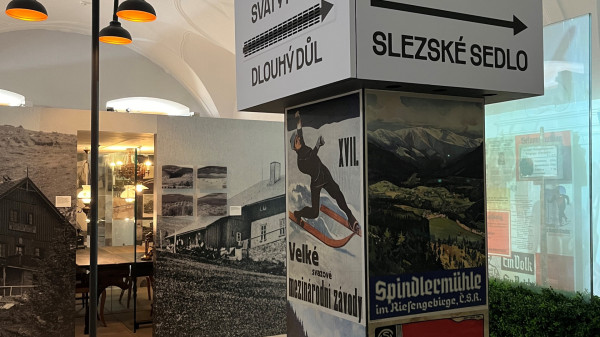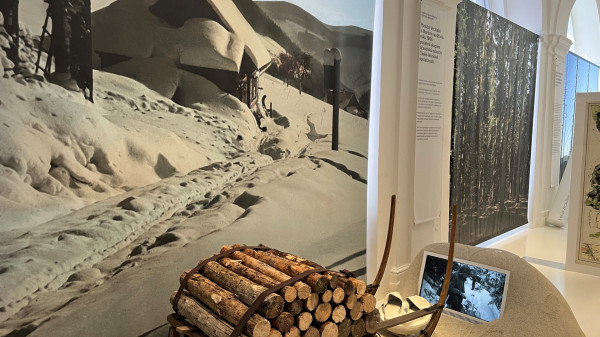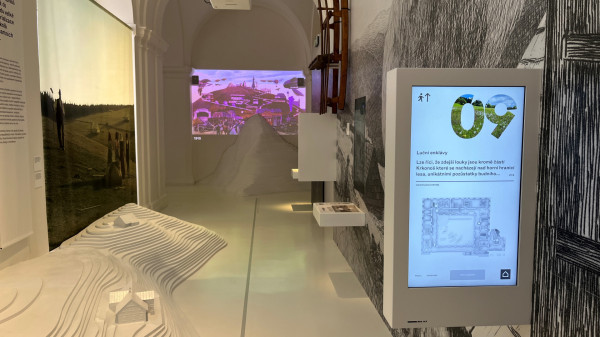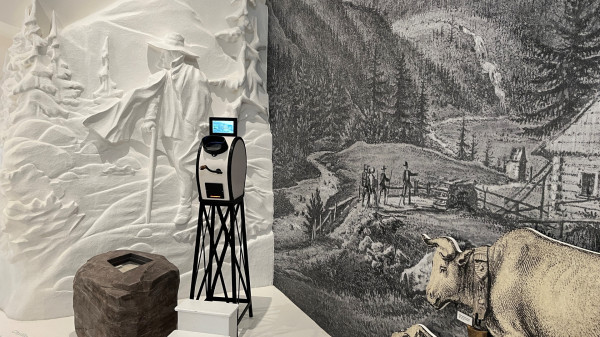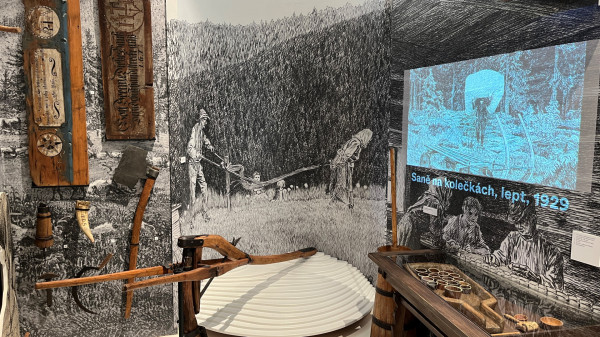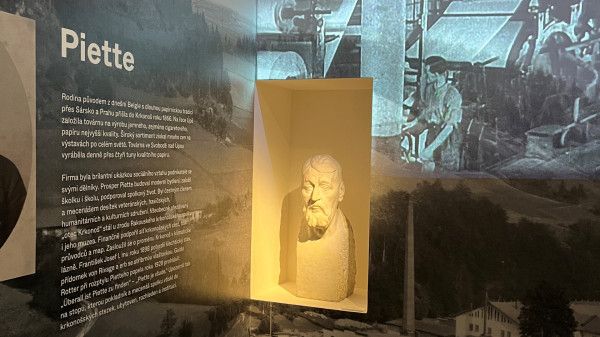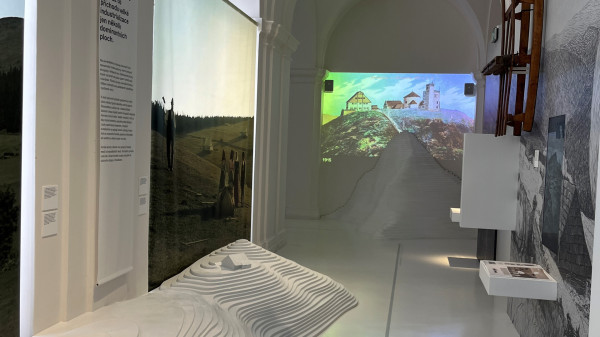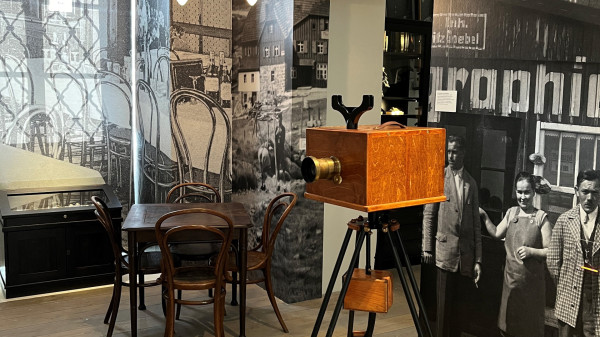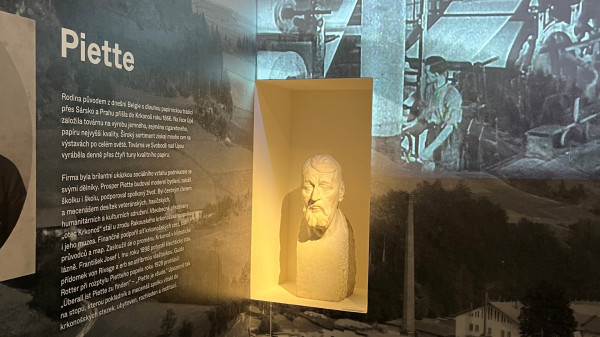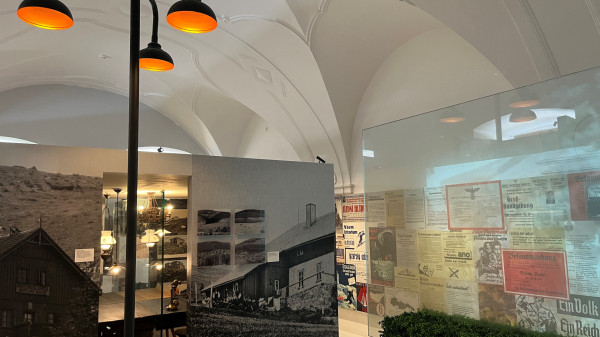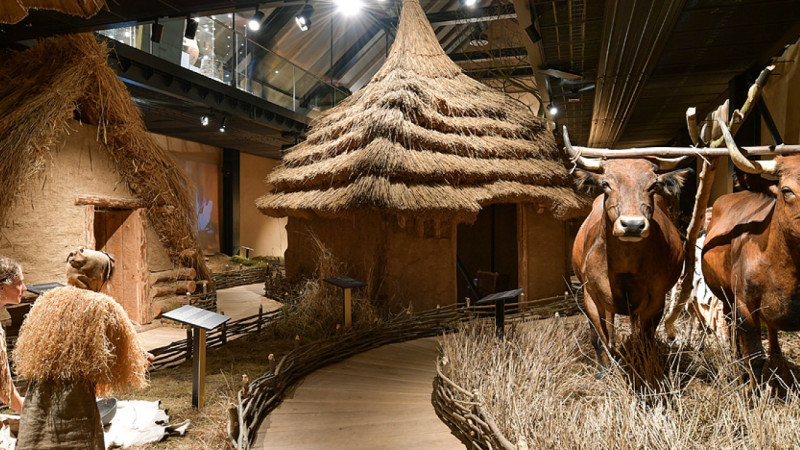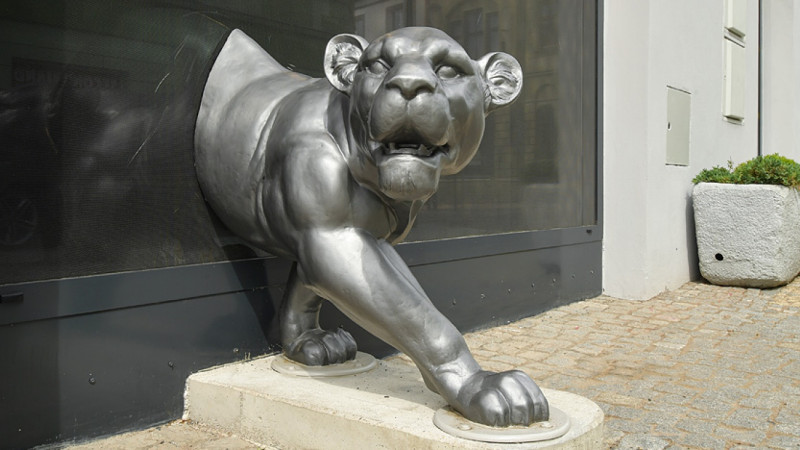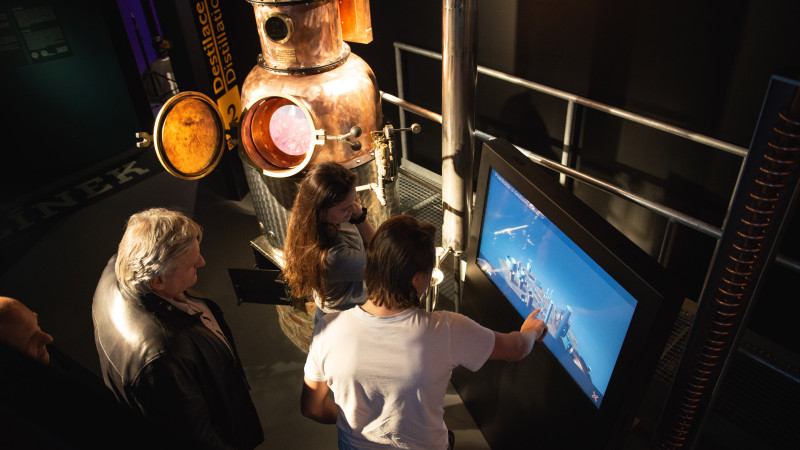
The largest exposition about the Krkonoše Mountains in the world
The exposition connects the natural values and the human influence on the Krkonoše
On 1 November 2023, after six years of reconstruction, the timeless and interactive 2,500 m² exhibition of the Krkonoše Museum was opened. It is located in the former Augustinian monastery in Vrchlabí, which has undergone a complete reconstruction of two floors and the addition of a new building. The entrance and the exhibition were designed by the well-known architect Roman Koucký and his team. In their design, the project architects Roman Koucký and Šárka Malá worked sensitively with the building of the monastery, in which they tried to find a natural relationship to its original function and to combine the demands of a modern exhibition with the possibilities of the historic building. The design focused on the potential of the space and the possibilities of using the energy of the site. "The building is not entirely suitable for such a museum. We had to figure out how to adapt the exhibition to the fact that we are in a baroque monastery. The fact that we managed to realise this despite all the difficulties can be described as a small miracle," said the architect.
The basis of the design of any modern exhibition is the libretto. It was created for the Krkonoše Museum by documentary filmmaker and producer Pavel Štingl.From the perspective of the audiovisual solution supplier, our goal was clearly to combine the cutting-edge AVIT design with the idea of a clean architectural solution from the side of the exhibition architect. That is to say, maximum effort to have the technology hidden, masked, or supplemented by custom-made coverings. When creating the content, the story lines were the basis for us to develop the script, which we had to set in the context of the edutainment, to link the individual narrative as well as factual messages, and then to fine-tune the dramaturgy so that the content of the exposition would appear compact.
Expozice jako místo pro edukaci i zábavu
The intention of the Krkonoše National Park Administration is to introduce visitors not only to the beauties of nature, but also to the pitfalls that threaten it. The exposition will thus become a place that will help educate visitors and involve school children in education.
One of the most impressive experiences in the exhibit is a room with a spiral concrete staircase that symbolizes the DNA helix. The walls project images depicting the devastation of nature by human activity - fires, floods, melting glaciers, giant landfills, polluted rivers and deforested forests from different parts of the world. The corridors of the former monastery are enlivened by three-dimensional exhibits, among which visitors will find, for example, a model of the moon with a projection about the origin of the Earth. Large-format photographs document the most devastating flood in the Krkonoše Mountains in 1897, while a model of the Hanč and Vrbata cairn on Zlatý vrch vrchší recalls the tragedy of 1913.
The exhibition dedicated to the local fauna includes stuffed bear, badger and grouse, as well as a tree with stuffed birds. A sword from the 15th century, found at the Mumlava Falls, proves that even remote places in the Krkonoše were visited by people in the Middle Ages. The Madonna of Vysoké nad Jizerou, dating from the first half of the 14th century, refers to the spread of Christianity.
From the main corridor, visitors descend the stairs into the dark Krkonoše mine, whose reinforced concrete construction creates an authentic atmosphere. Mining tools and equipment are displayed in glass cases. Next, they move on to the section with the mill wheel, powered by a water stream, where moving models of a Krkonoše hammer and sawmill are on display.
The museum also focuses on traditional crafts such as linen, agriculture and woodworking, and commemorates important Krkonoše families and famous mountain huts. Other interesting exhibits include a replica of a military bunker on the slopes of Luční hora and a model of the 1874 protection chapel that stood in the displaced Sklenářovice.
Jednoduchá správa expozice
The operating system is part of modern exposures. We have delivered the operating system of the V-PASS exhibition to the Krkonoše Museum. It is a unified system platform that combines a control system, a system for remote management of the content of individual exhibits, a system for analysis and collection of data from individual exhibits and visitors, and last but not least a service part that serves to support service work and maintenance of the entire exhibition.
The V-Pass system is thus an integral part of the exhibition and the overall solution and is the necessary basis of the entire exhibition for the filling and management of all exhibits.
Thanks to this system, the exhibition can be more easily adapted to the requirements of visitors and its error-free operation can be monitored.
The operator has an overview of the movement of people in the exposition, can identify and evaluate the activities of visitors in individual parts of the exposition, even to the level of tracking activities in single games, success rates, attractiveness of databases and individual ideas. Based on these results, the operator can adjust the timing of games/activities, change their difficulty, etc.
The Museum of the Giant Mountains has created a timeless exhibit that is a living ecosystem, fully manageable by the operator. The operator himself has the possibility to edit databases, change videos/pictures, invent quizzes, puzzles, make-up games, modify the so-called easter eggs of the exposition and still keep the operation varied and attractive. Thus, we are not creating a static "closed" model of the exposition, but we are creating a living, attractive and sustainable experience.


















